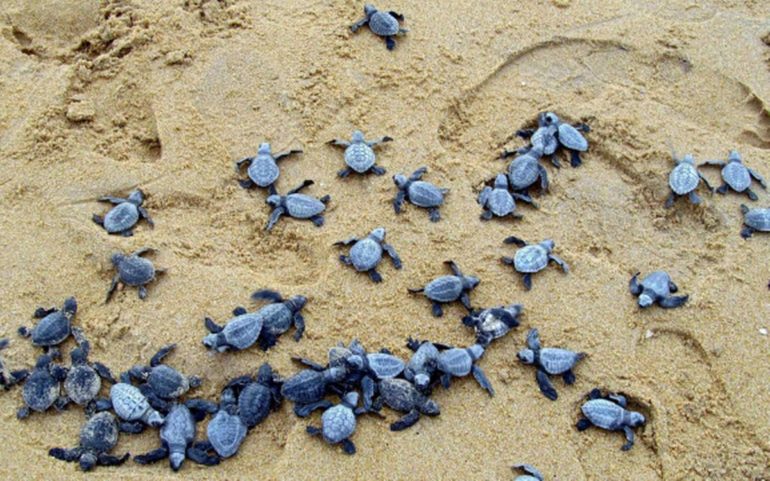Seems like the nationwide lockdown is giving Mother Nature the much-needed break to restore and replenish. Reports of reducing pollution levels in Delhi and marine life returning to coasts are nothing but heartwarming in these difficult times.
Mass Nesting Of Olive Ridley Turtles Seen At Rushikulya Beach
Adding to this list of positivity is the news that 8 Lakh Olive Ridley Turtles have nested peacefully on Odisha’s coasts. On March 22, at around 2 am, about 2,000 female Olive Ridley turtles were seen coming out of the sea to the Rushikulya beach.
It has been estimated that this year around 3.7 lakh Olive Ridleys Turtles have nested on Rushikulya beach while 4.2 lakh have nested at Gahirmatha, bringing the total number of turtles that have nested at these rookeries to around 8 lakh. While mass nesting at Gahirmatha is over, it is continuing at Rushikulya. Approximately, six crore eggs will be laid this year.
This feat is largely being attributed to the coronavirus lockdown that has largely restricted human movement on the beach, especially those of tourists. The nesting activity, which normally attracts hundreds of people to the site, was carried out unperturbed this year.

Also Read: From Moderate to Satisfactory; Delhi Now Breathes Fresh Air As Overall AQI Drops to 72
Efforts Taken By The Forest Department In Odisha
This large scale mass nesting, also known as arribada, was a huge success due to the efforts taken by the Forest Department. Regular cleaning of the beach had commenced long before the mass nesting began. Patrolling, to prevent fishing trawlers from plying along the coast was carried out by alert forest officials. As a result, trawlers did not cause any turtle deaths. Early this year, the Forest Department also set up 11 off-shore camps to monitor the beach.

The year 2018 saw ‘double mass nesting’ in the months of February and April, where the nesting figures rose to 4,73,000. However, in 2019, mass nesting of Olive Ridleys did not occur in Rushikulya due to the huge piles of waste that had collected on the coast owing to the cyclone and floods, which destroyed large parts of Odisha.
Also Read: Schools Of Dolphins Return Near Marine Drive Thanks To Drop In Water Traffic
First Published: March 27, 2020 4:59 PM





